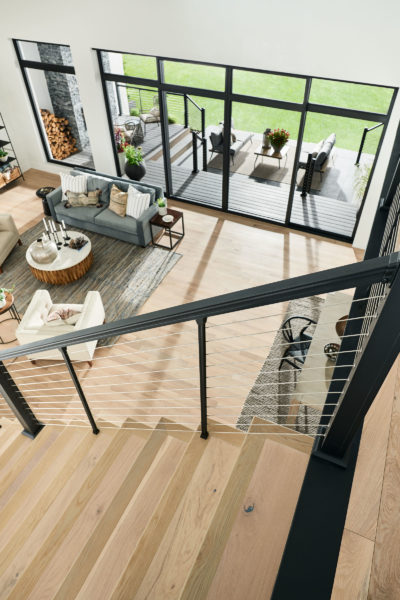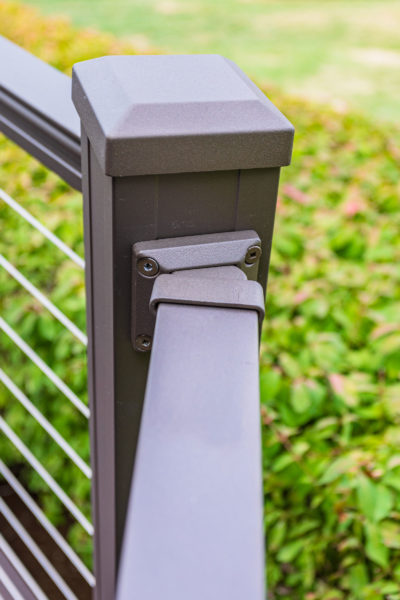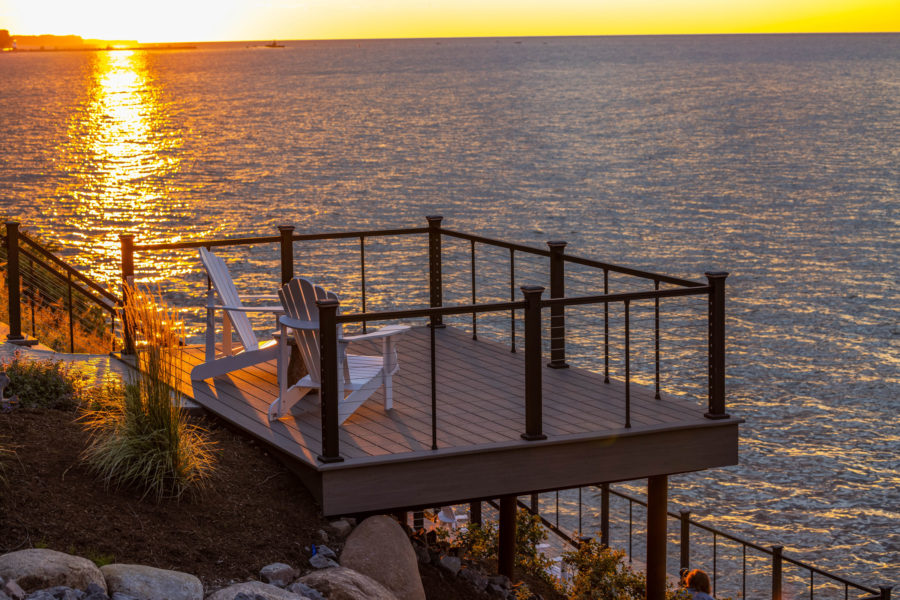Cable railing is simply a railing system in which traditional balusters are replaced by stainless steel cable. The cable can be run horizontally through the posts or vertically between the top and bottom rails. If the cable runs horizontally, the posts must be specially fitted to receive the cable, and there must be some way to tension the cable for security. In many cases the fittings in the posts allow the cable to be tightened using tools like an Allen wrench.
When using vertical cable, manufacturers usually instruct installers to replace one or more of the cables per section with a rod or baluster for strength. The number of reinforcement pieces required depends on how long the section is.
Both tightening the cable and adding reinforcements are important to keep the cable strong and supported, as is making sure posts are installed securely on the deck or porch. If posts are not fastened well, horizontal cable can pull them inward when the cable is tensioned.
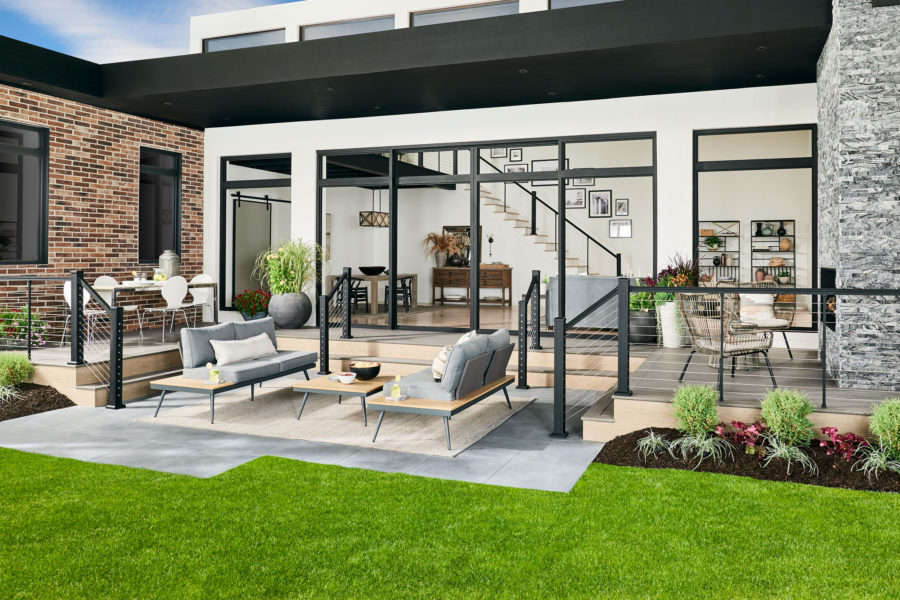
Photo courtesy of Key-Link Fencing & Railing
Why Should I Consider Cable Railing?
Cable railing continues to soar in popularity, as both buyers and renters gravitate toward the modern look of aluminum and steel. Additionally cable can be used with wood posts and railing thanks to adaptable stainless steel cable rail fittings. Together these systems pair well with both natural looks as well as trends like the modern farmhouse.
Recently Joel Sims, an architect in the city of Lancaster, Pennsylvania, chose horizontal cable railing for a deck outside of his warehouse. The warehouse, built in the 19th century, contains wood and plenty of exposed brick that acted as an ideal backdrop for railing with black and stainless elements.
“Horizontal cable railing is modern but timeless,” Joel says. “I knew that the industrial elements of the railing would work with the character of the warehouse for a seamless transition from the outdoor space to the indoor one.”
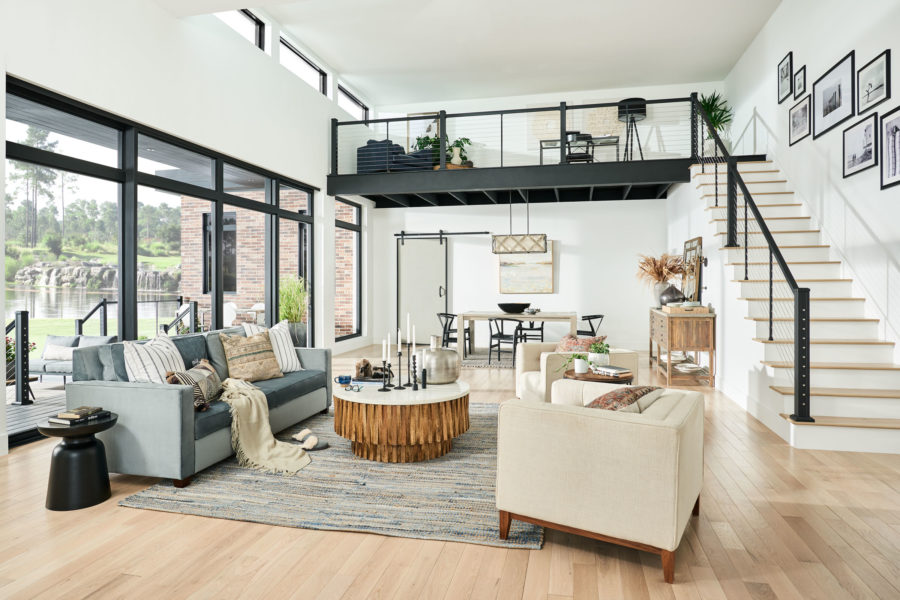
Photo courtesy of Key-Link Fencing & Railing
What to Look for When Choosing a Cable Railing System
Check the corners. In a horizontal system, does the cable pass through the corner posts (rounding the corner so only one post is required), or are two posts necessary? One-post corners will save a considerable amount of money, as posts are often the most expensive part of the system.
The same consideration applies to section lengths. First, what is the maximum length for a stair or level section? How many times must you start and stop a run of cable with a post or reinforcement baluster? The more sections, posts, or balusters required, the more your view is interrupted and the higher the cost for the overall installation.
Other things to look for include ways to save time (and thus money) on installation. Choices such as fewer posts, self-centering brackets, and brackets that allow for angled installation make jobs both quicker and easier for contractors.
- Photo courtesy of Key-Link Fencing & Railing
- Photo courtesy of Key-Link Fencing & Railing
Dispelling Myths about Cable Railing
Often people ask about a horizontal cable’s “ladder effect.” The ladder effect refers to the natural ladder created by horizontal cable as something children might climb. This used to be listed as an issue in code safety manuals but has since been removed. Some jurisdictions might still have a prohibition against horizontal cable railing, so code should be verified in advance of an installation.
Another common question is whether you need a bottom rail with a horizontal cable. With many systems the answer is no, as long as the gap between the deck floor and the first cable is small enough, there is no code requirement for a bottom rail.
Lastly, are cable railing systems sustainable?
Anything aluminum or steel contains recycled product. Manufacturers can check their sourcing to determine the exact amount of recycled product, but it almost certainly has some. And all aluminum and steel is 100% recyclable, so both aluminum railings and the stainless steel cable could be recycled when removed.
- Photo courtesy of Key-Link Fencing & Railing


